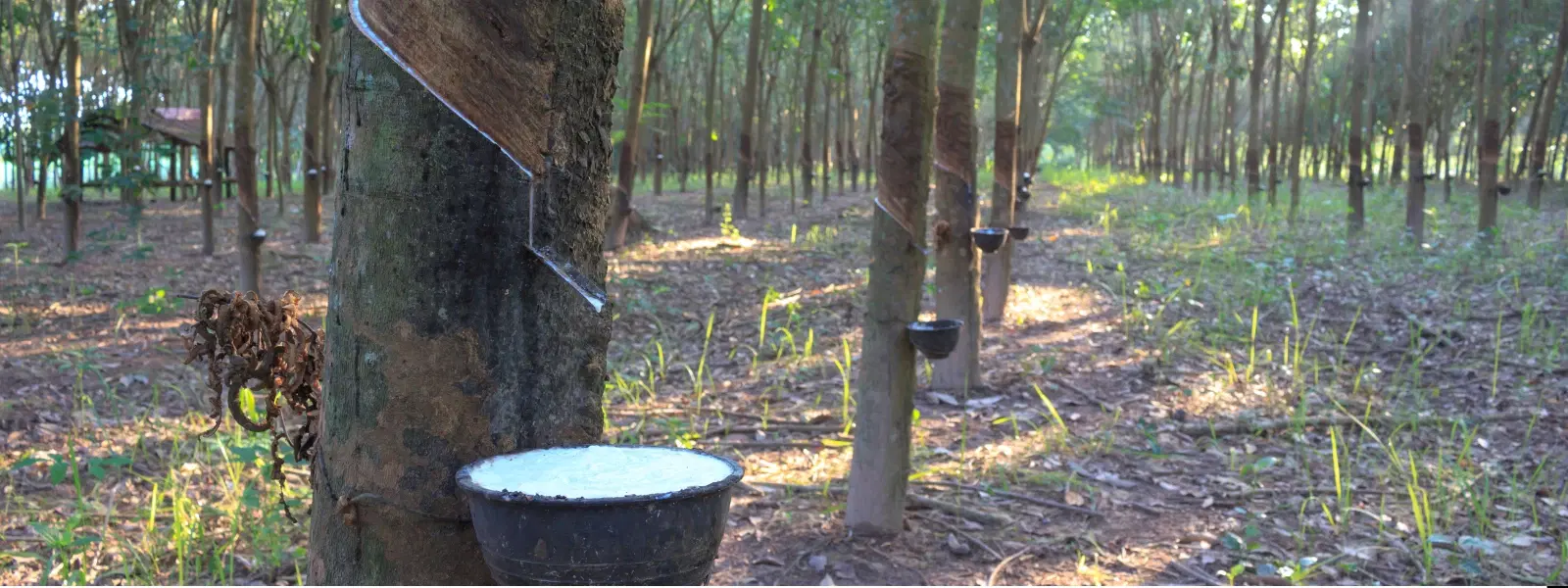
Hotels
•04 min read

Kerala, often celebrated as a hub for eco-tourism and vibrant agricultural experiences, offers visitors a rare glimpse into the world of rubber plantation tours. These tours blend education with adventure and cultural immersion, shedding light on the intricate process of rubber tree farming and the traditional art of latex tapping, all set against a backdrop of lush, scenic plantations.
Kerala is renowned for its flourishing rubber industry, playing a pivotal role in India's rubber production. The rubber plantations here offer more than just green expanses; they are living classrooms where visitors can witness the meticulous process of rubber cultivation. The scenic landscapes, dotted with dense groves of rubber trees, offer a perfect blend of natural beauty and agricultural heritage. Many tours include detailed insights into the process of latex tapping, machine-assisted and traditional methods alike, allowing tourists to appreciate both the art and science behind rubber production.
The appeal of rubber plantation tourism lies in its strong educational aspect. For those keen on sustainable agriculture or simply curious about how everyday products are made, these tours provide firsthand knowledge. The experience meshes well with other Kerala eco tours and agricultural adventures, making it an excellent option for travelers who appreciate immersive learning and cultural discovery. Whether you are a nature lover, historian, or just someone seeking a change from conventional tourism, exploring Kerala rubber plantations promises a refreshing perspective on rural life and modern farming techniques.
The ideal time to experience these tours is during the dry season, from November to February, when the weather is pleasant and the activities like latex tapping are in full swing. Kerala's tropical climate ensures year-round greenery, but timing your visit can provide a closer look at the vibrant life of the plantations. The dry months make it easier to enjoy outdoor activities and appreciate the beauty of rubber estates without being hindered by heavy monsoons.
Some of the most famous locations for rubber plantation tours are in Kottayam and Pathanamthitta. These regions are known for vast expanses of thriving rubber trees and a rich legacy of traditional farming. In addition to plantation visits, these areas are surrounded by other attractions such as local markets, ancient temples, and small villages that add a cultural touch to your tour experience.

Tour packages generally range from guided walks through the plantations to immersive experiences that include plantation stays. Many tours offer a mix of activities like hands-on experiences in latex tapping and insights into the entire rubber production process. Pricing varies based on factors such as group size, duration, and the inclusiveness of activities. Whether you are seeking a budget-friendly exploration or a more premium, in-depth experience, there are options tailored to diverse preferences.
During your visit to Kerala rubber plantations, you can expect a range of engaging activities. Common experiences include observing latex tapping demonstrations, participating in guided tours around the estates, and learning about the nuances of rubber processing. This educational journey often involves interactions with local farmers who share stories of sustainable farming practices and the challenges of modern agriculture. The hands-on nature of these tours also allows you to gain practical knowledge about the rubber production process.
Many tours provide the option to stay in plantation homestays or eco-lodges that are nestled within or near the rubber estates. These accommodations help enhance your overall experience by offering a glimpse into traditional Kerala living, complete with farm-to-table meals and cultural engagements. The simplicity and serene surroundings of these lodging options allow you to unwind and truly appreciate the natural environment.
Did You Know? Rubber plantations in Kerala often double as biodiversity hotspots, hosting a variety of flora and fauna. Opt for tours that include nature walks to explore this hidden treasure.
Understanding the process of rubber cultivation is key to appreciating these tours. In Kerala, the process begins with the planting of rubber saplings, followed by careful nurturing until the trees are robust enough for latex extraction. The tapping process involves skilled labor, and over the years, traditional techniques have evolved to meet modern demands while retaining their cultural essence. The industry not only supports local economies but also strengthens Kerala’s reputation on a national and global scale in the rubber production arena.

Eco-friendly practices are integral to Kerala rubber plantations. Many estates employ sustainable farming techniques that minimize environmental impact and promote biodiversity. Plantation tourism itself plays a significant role in supporting these practices by raising awareness and funds, which in turn help maintain a harmonious balance between agricultural productivity and ecological conservation. These tours exemplify a commitment to sustainability while offering visitors valuable insights into modern agricultural innovations.
Rubber cultivation costs vary based on factors like land size, labor, and farming techniques. On average, it ranges from ₹1.5 lakh to ₹2 lakh per acre annually.
Rubber plantations thrive in Kerala’s tropical climate, with latex tapping typically occurring during the dry season from November to February.
Kottayam is widely regarded as the hub of rubber plantations in Kerala, with several renowned estates offering tours and educational experiences.
The best tours often include visits to estates in Kottayam and Pathanamthitta, featuring guided walks, latex tapping demonstrations, and plantation stays.
Yes, many rubber plantations offer homestays or eco-lodges for an immersive experience, often paired with local cuisine and cultural activities.
Rubber plantation tours in Kerala offer far more than a scenic getaway—they provide an enriching journey into the world of rubber cultivation and sustainable agriculture. Through engaging activities, insightful tours, and authentic accommodation experiences, visitors gain a deeper understanding of Kerala’s agricultural heritage and the vital role rubber production plays in local communities. This immersive travel experience not only educates but also inspires a greater appreciation for eco-friendly practices and the beauty of rural Kerala.